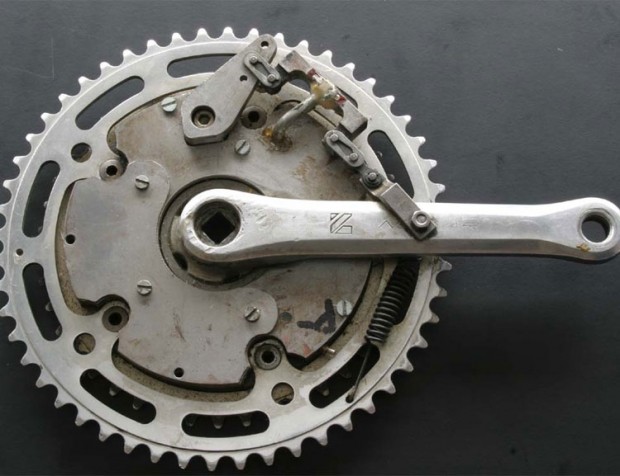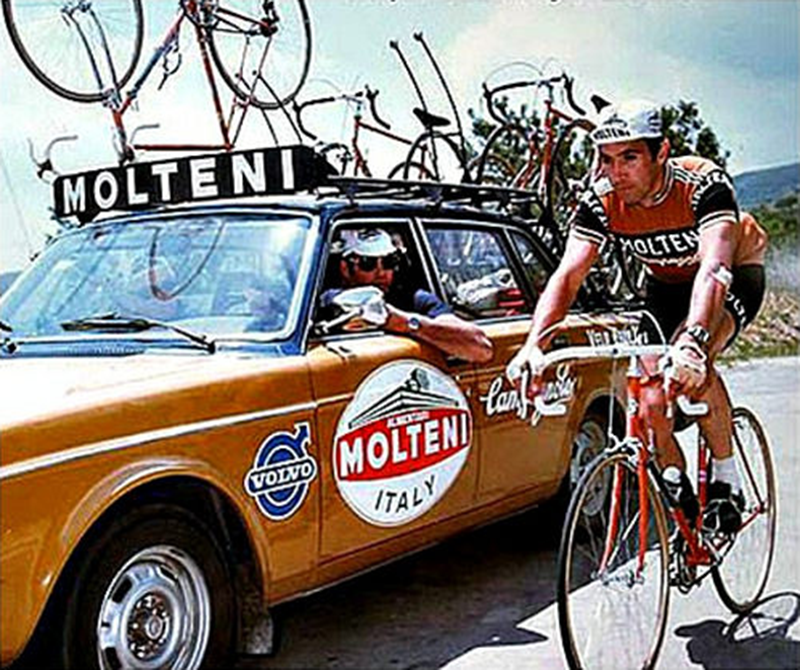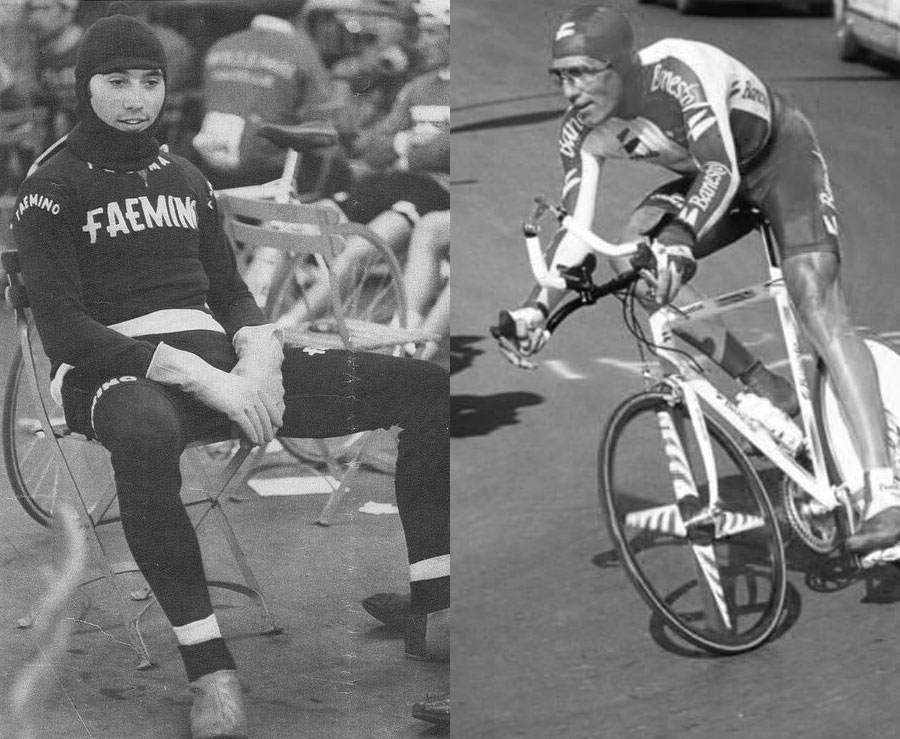Rule#74 Conundrum

Maui Velominatus Dave is tapering for this Saturday’s Cycle to the Sun. It is more mass start, time trial to the sun as there is nothing like 3.3 km of continual climbing to sort everyone out by their power to weight ratios. After 2 km of climbing there is no pack and no draft. Everyone climbs as hard as they can and almost everyone is riding alone.
Dave has been training like a bastard. He doesn’t have a coach but he does have a power meter and an analytical mind. As we talked about his up-coming race he could not contain himself any longer, “I don’t know how you and Frank can train without power meters. They are fantastic. They make your bike an extension of your body.”
What? I had never considered this as a possibility. Isn’t this something we all want; the rolling centaur? This is a feedback loop: the brain to the legs to the cranks to the strain gages to the head unit to the eyes to the brain. The bike is getting involved here. The bike is telling you how hard you are riding it. Dude.
Presently I’m just riding with a V-meter. I’ve used heart rate meters and cyclometers but got tired of seeing how slow I was. I wanted to simplify; I wanted an unadulterated ride. Also, I obviously didn’t want to formally train anymore, just do rides that I barely made it home from. Is that training? To quote Roy Knickman*, “you are what you train.” His admonition is something Abandy should take to heart; if all you do is train in the mountains, that’s all you are going to be good at. I might have been just training to barely make it home but really it was not training. Training should be more work and less play.
We all need cycling goals. We all need something to get fitter for, even if the goal is as simple not to get shelled as quickly on that same climb.
Let us be very clear on the idea of training rides versus other rides. A training ride may not be too much fun and most importantly there should be a clear plan for what will happen, see Rule #71. This is where the power meter has to shine; it is the most reliable, direct and accurate instrument for monitoring effort on the bike. The prices are coming down and the model choices are going up. Here is a nice amateur guide for them.
The head unit stays at home on the weekend group ride to the café and back. That ride is why you did the training ride(s) earlier in the week. Don’t try to mix the two or you will be abused. We do the training rides so we can drop our friends on the weekend, that’s what friends do. And nobody wants to be accused of staring at their power meter when they should be looking where they are going, no matter how well they ride.
I am intrigued by the concept of the bike becoming more of an extension of the body through the power meter. Does this violate The Rules? Does this make you a stronger cyclists?
*Who is Roy Knickman? American Hardest of Hardman of the 7-Eleven and La Vie Claire era, FFS.


Power meters may also violate Rule #90
Power = Torque/ rotational speed
Torque is essentially the force which you push down on the pedal
BUT power may be greater at a higher rate of rotational speed and a lower quantity of torque, which may tempt you to prematurely shift out of your big ring. This is a dangerous scenario and therefore power meters should only be used with the utmost caution since it could lead to habits that stray from the path to Mt. Velomis.
Over-use is the common issue. I was on a charity ride the other weekend and during the ride there were a couple incidents that helped fortify my long ago decision to leave digital technology off the bicycle.
1) We were in a small group of riders and 2 guys appeared to be content setting the pace, so wanting to contribute I rode up to chat and do some time in the wind. One of them replied “no worries, just keep the pace around 35” I replied, “I’ll try, but I have no way of measuring my speed” Long story short, it didn’t work so well, since he was riding 2nd wheel and would not change his speed no matter what… we left them shortly afterwards.
2) My VMH is new-ish to riding in larger groups. We joined a group of club riders and when she took her turn at the front I noticed that she was accelerating and the group was starting to splinter slightly. I went back up beside her to let her know that she need not go quite so hard (I made this mistake when I was starting too, since the natural thing is to get to the front and push much harder on the pedals – a little too hard when you’re new). She said, “sorry, I only have a V-meter.” This made me feel all warm and happy inside, and I said ‘carry on’. [note: she doesn’t read the site, but knows that I do – thus this gave me great pleasure to hear her say this]
@extra special and bitter Nice job infiltrating the mind of the VMH.
@frank
So busy, so much to read, too little time. But if I was going to put my thoughts on this fine article into words of my own, I’d just be repeating Frank.
@Teocalli
Plastic deflection is lost energy. Elastic isn’t.
Every crank flexes slightly as you pedal. That changes the way materials behave – specifically, in power-meter, they implement tiny strips of metal – strain gauges – that change conductivity in a measurable way when they’re put under tension: Arranging them in certain patterns allows you to track by how much the crank itself is flexing. The system flexes just as much as it always did, except now there’s a current that measures that flex. Powertap does the same, except at the hub.
@frank
Power measures the actual output. Everything else measures the reaction. That’s the main difference between HR and feel as opposed to power.
Actually, if you watch the final stage from the perspective of a coach who understands power, the tactics of that day can be interpreted the other way around. Sky knew Contador is strong, and very soon after the start of the stage it would be painfully obvious that Froome is on an off day. A rider with power, who’s in-tune with his feeling, will immediately see that’s for a given effort he’s not producing the same power. Or that his HR doesn’t line up.
That’s why they sent a top climber into the break: At least salvage the stage. They refused to pull even though Sky were the only team with more than one rider, and Contador was isolated. They knew they won’t win the overall since Froome is suffering, so why let Contador have it?
Power doesn’t save you from having a bad day (or two), especially after a crash. But it helps you recognize it and race accordingly…
@pistard
Thanks so much for posting this. A real treat and a real glimpse into the past. So many things to point out: trains are worse now in the UK, roads are WAY busier, cycling gear has improved, mudguards and saddlebags are not quite as de rigeur as they once were, neither as plus fours. As always, something were better back then, some things not so much. I once joined the CTC but the bastards left me in the rain fixing a puncture by myself on my first outing with them – it was my last.
@tessar
No system is 100% efficient so to create any output there is a corresponding input loss. The only question is how much and whether it is significant. Elastic still has lost energy as no elastic system is 100% efficient in returning the energy in the same form – typically there will be eat produced from elastic systems.
@Teocalli
Completely, entirely, insignificant. As I said, strain gauges go on top of the existing structure – they just measure the flex that already exists. Yup, even the beloved Dura-Ace cranks flex. In my Power2Max meter, you basically unscrew the Rotor 3D crank’s spider, and thread in the new one. Still a straight connection, but with the measuring device “piggy-backing” on it.
There’s some weight added, but in the days of sub-800g frames, that’s fine for UCI-bound pros. And since 300g of added weight is so insignificant…